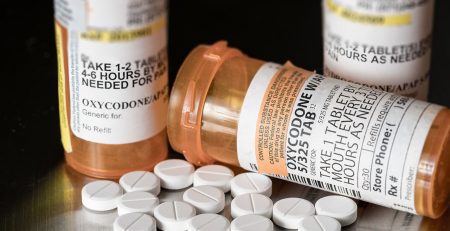Statistics show that 75% of people with substance use disorders are employed.1
This includes individuals who are struggling with disorders such as alcoholism, heroin addiction, cocaine addiction, meth addiction, and more. While issues such as alcoholism and drug addiction at work are growing problems, there are steps employers and employees can take to encourage sobriety. Below is more on the cost of employee substance abuse and tips for maintaining a drug-free workplace.
The Cost of Substance Abuse in the Workplace
Many supervisors and business owners assume that the use of drugs and alcohol in the workplace is only challenging for the employee who is struggling. But statistics regarding the costs of workplace addiction paint another picture. Addiction in the workplace isn’t just harmful to the employee who is struggling. It can be harmful to their surrounding team, their supervisors, the clients your company serves, and your company as a whole.
It is estimated that addiction in the workplace costs businesses over $400 billion annually in lost productivity, increased absences, health care expenses, disability cases, and an increase in workers’ compensation claims.1 Common effects of substance abuse in the workplace also include:
- Low productivity: Low productivity is one of the most obvious costs of drug abuse in the workplace. Addicts and alcoholics are 33% less productive than their sober coworkers, costing employers around $25.5 billion every year. Substance abuse can have a severe impact on a person’s ability to perform at work, making them careless, distracted, and unreliable. Deadlines may get missed, they may show up drunk or high to work, and they’re more likely to be injured or endanger the welfare of others.
- Frequent absences: On average, most people miss about 10 days of work a year due to injury, illness, or other reasons. On the other hand, employees with addictions miss an average of 15 days a year, which is more than 50% of their peers. Those struggling with prescription drug addiction or opioid addiction, in particular, were absent nearly three times as much. Frequent absences can create problems for employers, like increased workloads on coworkers, pushed-back deadlines, reduced morale, reduced productivity, and work quality.
- High turnover rate: When employees are drinking or using drugs on the job or frequently come to work high or intoxicated, employees that are picking up the slack may feel overwhelmed and unappreciated, which can impact company morale. Addicted coworkers can add a lot of stress to their colleagues, not only because they’re lacking in fulfilling their responsibilities but also because they may impact the culture and mood of the office. As a result, colleagues may choose to quit, especially if the individual’s state is not addressed.
- Healthcare costs: Healthcare costs associated with substance abuse are estimated to cost employers about $25 billion each year. Because drugs and alcohol can be hard on the body, addicted coworkers usually require more medical attention. They’re also more likely to experience mental health problems in addition to the physical ailments that are typical of addiction. What’s more, according to the National Survey on Drug Use and Health (NSDUH), respondents with a substance abuse disorder used services that cost their employers $3.8k in healthcare premiums compared to $2.3k of their non-addicted colleagues.
The costs of failing to sustain a drug-free workplace can pile up if left unaddressed, but our luxury drug and alcohol rehab in South Florida is sharing some steps employers can take to reduce the rates of substance abuse at work.
Signs of Drug Use at the Workplace
It’s important to note that the behavioral and physical signs of addiction may vary according to the substance in question and the frequency of use. Below are some common signs of substance abuse in the workplace to look out for if you suspect that a team member or coworker has a drug or alcohol problem.
- Suddenly neglecting responsibilities.
- Regular absences or frequently calling out sick.
- Sudden disinterest in work.
- Lack of energy or motivation.
- Secretive or suspicious behavior.
- Change in performance or reduced productivity.
- Impaired motor function, including slurred speech, swaying, staggering, falling over, or holding onto something to keep upright.
- Changes in physical appearance, such as poor grooming and hygiene, wearing the same clothes they wore the day before, having a smelly or dirty body, or even smelling like drugs/smoke/alcohol.
- Changes in personality, such as mood swings and emotional displays like hostility, anger, paranoia, or fear for no apparent reason.
As we previously mentioned, the signs of addiction may vary depending on the substance’s impact on the body. For instance, a person with an opioid use disorder may display symptoms like slurred speech and drowsiness, while a person who’s addicted to cocaine may display signs like erratic behavior, excessive energy, and aggression.
If you recognize any of these symptoms in a team member or colleague, don’t hesitate to reach out for help. Our Florida luxury drug and alcohol rehab offers medically monitored detox and substance-specific treatment programs that can make recovery possible.
Tips for a Drug-Free Workplace
Because employees spend most of their time at work, businesses should consider reducing workplace triggers for relapse or substance abuse. For instance, a holiday party lush with alcohol may be a triggering experience for an employee who is in recovery from alcoholism. Undue stress or anxiety-inducing situations without an outlet for relaxation may push some employees in the wrong direction, which is why it’s crucial to check in with employees regarding their mental health needs. You may also want to take a look at our tips for managing employees with anxiety or depression.
Some additional tips for maintaining a drug-free workplace include:
- Develop a definitive drug-free policy: Your first move is to make sure your workplace drug policy is established and that all employees know about it. If this is something you’ve never covered or highlighted at work, have your entire team meet one day so you can go over the policy. You can also print this policy and post it throughout the office.
- Consider your drug-testing policy: If you’ve never had drug testing as part of the hiring process, you might want to consider it. Whether you own a construction company or a digital marketing company, addiction doesn’t discriminate, and it’s better to be safe than sorry.
- Consider drug testing for current employees: This one can be a bit tricky legally, as you should establish a legitimate reason for drug testing the individual. Unlike drug testing as part of the hiring process, drug testing current employees is a separate matter. However, if you believe an employee is showing signs of substance abuse, speak to your Human Resources department about a drug test.
If you suspect that an employee or coworker is struggling with alcoholism, addiction, or a substance use disorder, contacting our high-end rehab is our top tip. We offer addiction treatment for professionals of all ages who are committed to finding their sobriety. We also offer drug intervention help.
If you are struggling with addiction or if you have a coworker who can benefit from rehabilitative care, call Seaside Palm Beach today at 561-677-9374 to learn more about our residential addiction treatment in Palm Beach. Together, we can build drug-free workplaces where employees, managers, and owners can work together towards common goals.
Sources:
- NCBI – A Substance Use Cost Calculator for US Employers With an Emphasis on Prescription Pain Medication Misuse.
- US Drug Test Centers – The Cost of Drug Abuse in the Workplace
- NCBI – A Substance Use Cost Calculator for US Employers With an Emphasis on Prescription Pain Medication Misuse
- National Safety Council – How Workers with Active Substance Use Disorders Impact Employer Health Care Costs
Related Reading:













